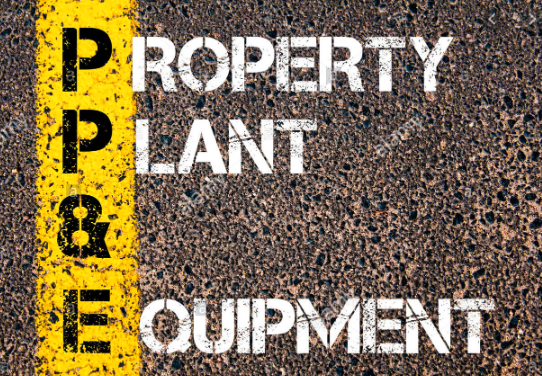Impact of Covid-19 to Accounting: Non-Financial Assets and Fair Value

This second installment of the series will discuss the impact of Covid-19 to non-financial assets and fair value. This article and other articles in the series summarize the impact based on several credible sources, i.e. the Big Four accounting firms, professional accountancy organization and IFAC (International Federation of Accountants). For further and detailed discussion, please refer to the original documents as cited in the sources at the end of this article for further reading, of which the links to access the full report are provided.
1. Non-financial assets
Non-financial assets are assets that are not traded on the financial market and whose value are determined from the assets’ characteristics rather than contractual claims. Some examples of non-financial assets are PPE (property, plant and equipment or sometimes is also referred to as fixed assets), intangible assets and inventories. Several concerns with regards to these assets are discussed below.
a. Impairment
As arranged in IAS 36, the objective of this standard is to make sure that assets owned by entities are not carried more that their recoverable amount (being the higher of fair value less costs of disposal and value in use). Impairment test needs to be performed by entities when there is an indication of asset impairment (except for goodwill and certain intangible assets, which requires annual impairment test). Current Covid-19 global pandemic might be an indication of asset impairment, hence entities must perform the impairment test. When calculating value in use, entities must ensure that the discount rate and the cash flows projections prepared are appropriate, given current circumstances.
b. PPE
PPE is dealt with in IAS 16. Due to the government’s initiative to lockdown the economy or quarantine several areas as a means to prevent the spread of the virus, some entities have to close their business temporarily. No business operation means that the PPE asset is temporarily idle, however depreciation expense still has to be recorded in the income statement. Also, entities need to re-assess their estimates on the remaining useful life and residual value of their PPE. If there are changes to such estimates, entities need to make revision in accordance with IAS 8. In addition, in line with IAS 23, any related borrowing costs that requires interest to be capitalized is to be suspended when the development of the asset is suspended.
c. Inventories
As prescribed in IAS 2, inventories have to be carried at the lower of cost or net realizable value (NRV). The NRV calculation will be affected by Covid-19, in which more detailed assumptions are needed and its value is likely to decrease, due to inventory obsolescence or slow-moving inventory, up to the point where the NRV is lower than the cost. As a result, entities might need to write down their inventories to NRV. The standard also specifies that overhead costs are to be included as the cost of inventory. Due to current circumstances that lead to reduced or suspended production activities, companies must be careful in determining the fixed overhead costs that will be included in the cost of inventory. Fixed overhead costs should be allocated to the products on the basis of normal capacity, hence will not be affected by the actual, sometimes volatile, capacity usage.

2. Fair value (FV)
The accounting standard that deals with FV is IFRS 13, which defines FV as “The price that would be received to sell an asset or paid to transfer a liability in an orderly transaction between market participants at the measurement date”. Through FV hierarchy, inputs that will be used in the FV valuation techniques are categorized into three levels:
- Level 1: quoted prices in active markets for identical assets/ liabilities.
- Level 2: inputs other than level 1 that are observable for the asset/ liability.
- Level 3: unobservable inputs for the asset/ liability.
IFRS 13 also discusses the valuation techniques to measure FV, which consist of:
- Market approach: uses price and other relevant information generated by market transactions.
- Cost approach: the amount to replace the service capacity of an asset (current replacement cost).
- Income approach: convert future amounts into a single current amount, reflecting current market expectations about those future amounts.
As a result of Covid-19, there have been increases in the volatility of various markets, which could affect the fair value measurement. Entities need to consider the extent of market knowledge about the outbreak at the reporting date to determine the FV at that particular date. Special attention needs to be addressed to level 3 inputs, by utilizing the best information, both internal and external, known to the entity in the circumstances. Entities need to also disclose the valuation techniques as well as the inputs that they used to arrive at the FV. Furthermore, sensitivity of the valuation changes in assumptions must be disclosed as well.
Sources:
Deloitte 2020, IFRS in Focus: Accounting Considerations Related to the Coronavirus 2019 Disease, March
EY 2020, Applying IFRS: IFRS Accounting Considerations of the Coronavirus Outbreak, February
Gould, S. & Arnold, C. 2020, The Financial Reporting Implications of COVID- 19, 13 April, IFAC Knowledge Gateway
IFRS Foundation, IAS 2 Inventories
IFRS Foundation, IAS 8 Accounting Policies, Changes in Accounting Estimates and Errors
IFRS Foundation, IAS 16 Property, Plant and Equipment
IFRS Foundation, IAS 23 Borrowing Costs
IFRS Foundation, IAS 36 Impairment of Assets
IFRS Foundation, IFRS 13 Fair Value Measurement
KPMG 2020, Quick Guide on COVID-19, https://home.kpmg/xx/en/home/insights/2020/03/covid-19-financial-reporting-resource-centre.html
PwC 2020, In Depth: A Look at Current Financial Reporting Issues – Accounting Implications of the Effects of Coronavirus, 17 March
(AL)
